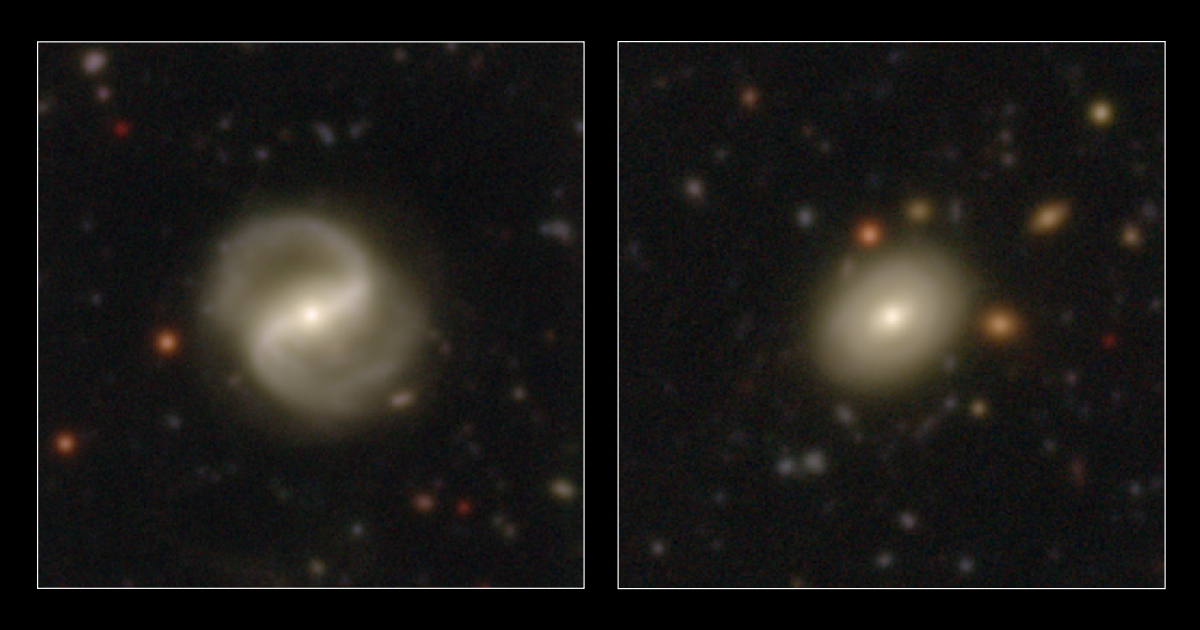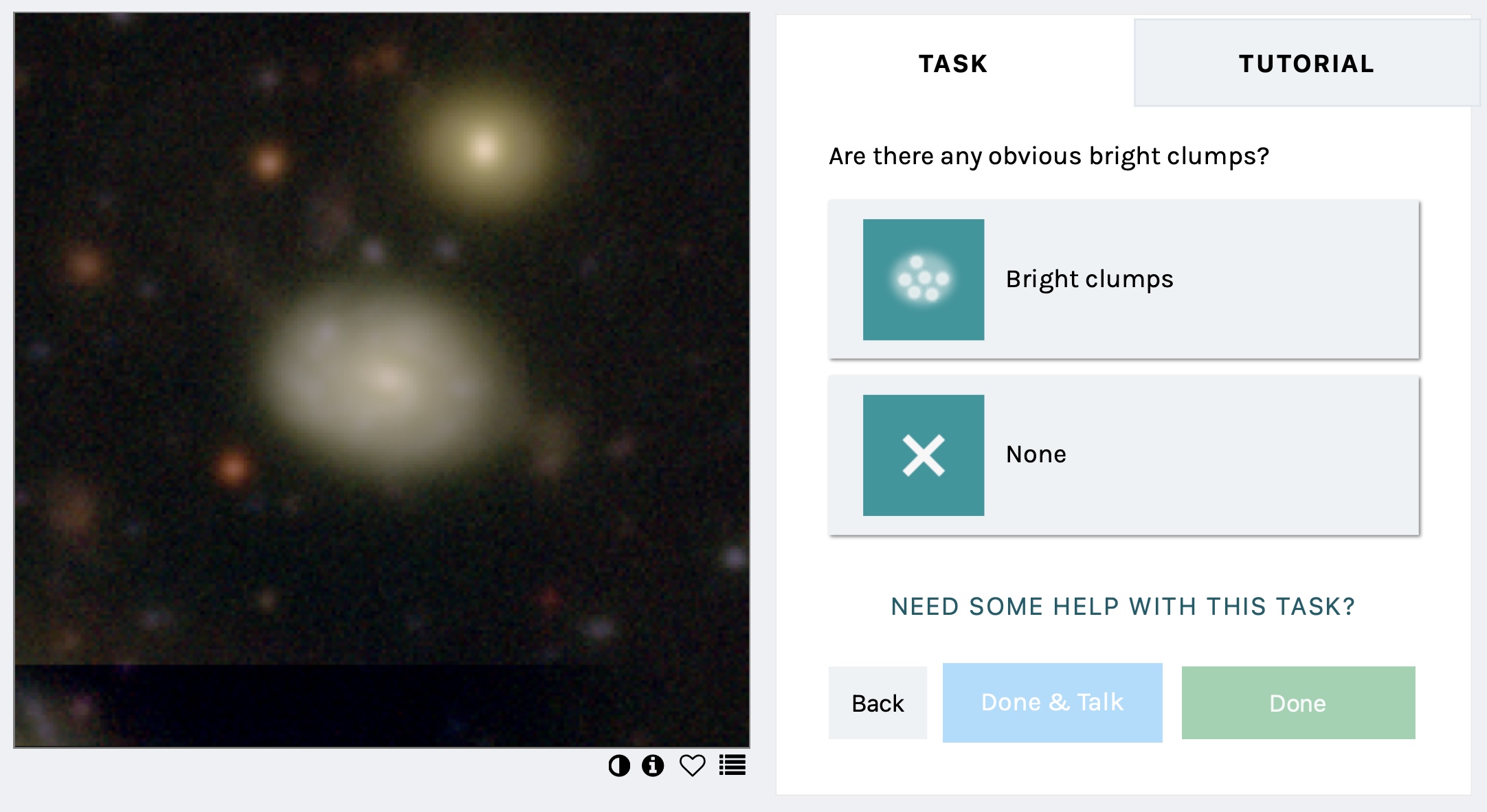Help wanted! Astronomers seek assistance from citizen scientists
In a new, magnificent project — the Cosmic Dawn Survey — professional astronomers are seeking the assistance from the public. The survey is unveiling tens of millions of new galaxies, and to describe their physical properties these galaxies need to be organized according to various criteria, including their “appearance”. But unlike most features in science, the appearance of a galaxy is not always objective.
Two galaxies observed with the 8.2 m Subaru telescope on the summit of Maunakea in Hawaii, as part of the Hawaii Two-0 (H20) survey, a key component to the ambitious Cosmic Dawn Survey. Whereas most would agree that the left galaxy is a spiral galaxy with two arms, the right galaxy is less easily classified. Credit: galaxyzoo.org.
Looks matter
But not all characteristics are this easily quantified.
Galaxies come in many shapes, sizes, and colors. Based on their appearance, or morphology, they can be broadly grouped into a number of classes. Since the first attempt to do this by Edwin Hubble back in 1926, the classification scheme has been expanded somewhat, with various sub-categories, but is still principally the same:
Arguably, the most prominent types are the mostly featureless and reddish ellipticals, the more bluish spirals, the intermediate lenticular galaxies, and the smaller irregular galaxies. Distributing galaxies in these “boxes” is not just a leisure hobby of overzealous astronomers. Understanding the morphology of galaxies, and how they are interconnected, can lead to important physical insight. The morphology is strongly linked to their formation and evolution, influenced both by internal processes such as their star formation history, and by external processes such as encounters with other galaxies.
But although some galaxies unambiguously belong to a given category, many are less well-defined — either because they share features from multiple types or, for the more distant galaxies, because observations are poorly resolved. One way to solve this issue is to let more than one person assess a given galaxy. If one astronomer thinks a galaxy is an elliptical, but three think it's a lenticular, that galaxy may then be classified as the latter.
With so few people, however, the answer will be quite uncertain. And while it may be possible for ten, or perhaps 100 galaxies, how does one go about inspecting millions of galaxies?
The Cosmic Dawn Survey
This is in fact a very present issue for the ongoing Cosmic Dawn Survey, a magnificent observational program combining multiple Earth- and space-based telescopes. This survey monitors a very large field on the sky, corresponding to the area covered by your clenched fist held out your arm’s length, at visual and infrared wavelengths.
Acting as a reconnaissance for the ESA space mission Euclid, to be launched later this year, the Cosmic Dawn Survey’s scientific aim is to understand the co-evolution of galaxies, black holes, and the dark matter halos that host them throughout most of the cosmic history.
A key component of the Cosmic Dawn Survey is the so-called Hawaii Two-0 survey, or H20, which has observed tens of millions of galaxies with the Hyper Suprime-Cam, a gigantic camera mounted on the 8.2 m Subaru telescope on the summit of Maunakea in Hawaii.
Conor McPartland is a postdoc at the Cosmic Dawn Center in Copenhagen, and one of the co-investigators behind the H20 survey. He recalls: “As an undergraduate student, I would spend hours around a table with my supervisor and other professors, discussing the morphology of a few galaxies. I thought, if the world-leading experts in this field can't agree on this, how can we ever learn anything from the morphology of a galaxy?”
A zoo of galaxies
The solution is a brilliant project dubbed “Galaxy Zoo”. The idea behind this crowdsourced campaign is to recruit anyone interested in astronomy to browse through a database of galaxies, in this way acting like a “citizen scientist”. For each galaxy, the citizen scientist is first asked “Is this galaxy smooth or does it have features?” and then taken through a decision tree of questions such as “How many spiral arms do you see?” and “Are there any signs of encounters with other galaxies?”.
Eventually the software behind the Galaxy Zoo also learns from the answers provided, thereby being able to deal with human biases. Users will not necessarily agree, but each galaxy will be assessed by enough people to converge to a statistically robust answer, typically 10–100 depending on how well-defined it looks.
The Zooniverse
The Galaxy Zoo project initiated in 2007, originally to classify local galaxies from the Sloan Digitized Sky Survey. Since then, it has been used for several galaxy samples, not only to classify morphology but also other observables, e.g. galaxy rotation and galactic dust.
The project eventually evolved to other branches of science, comprising together the “Zooniverse”. Together with Galaxy Zoo, today the complete Zooniverse includes projects within such diverse fields as sociology, art, climate, and language.
Its latest incarnation, which is the project described here, “Galaxy Zoo: Cosmic Dawn”, is partly supported by the ESCAPE project, which aims to bring together the astronomy, astroparticle and particle physics communities to support open science, according to the FAIR (Findable, Accessible, Interoperable and Reusable) principles.
An example of a galaxy in the H20 sample: The galaxy has a small bulge, and shows signs of spiral arms, but how many? Credit: zooniverse.org.
“The Galaxy Zoo project is not only fantastically helpful to us astronomers. It also brings together people across borders and socio-economic breaches. Anyone can participate and help expanding our cosmological horizon,” says Conor McPartland. “There is something breathtaking about opening your computer and clicking through a catalog of galaxies, knowing that for several of these galaxies you're the first person in the entire world to see this little blob of light, composed of billions of suns, and located billions of lightyears away.”
Since the H20 and Cosmic Dawn surveys are ongoing projects, more galaxies will come. In this way citizen scientist are interacting with the researchers in real time. It is not unlikely that users will fine remarkable objects that will be followed up with new observations.
In the time it took you reading this article, 50 additional galaxies have been classified by enthusiastic citizen scientist. If you would like to become one too, and to contribute to important research unveiling the nature of these enigmatic entities that are galaxies, all you have to do is click this link, sign up, and classify away.
More information
Contact
- Conor McPartland (English)
- Peter Laursen (Danish)
Galaxy Zoo blogpost about the H20 survey
Cosmic Dawn Center surveys
Danish version
To read this news story in Danish, click here.



